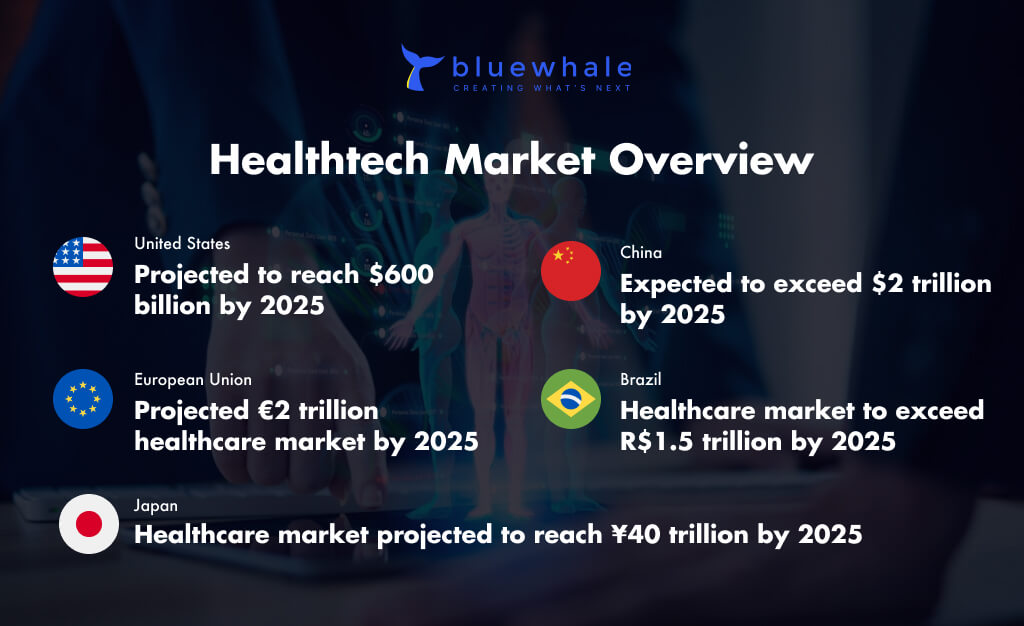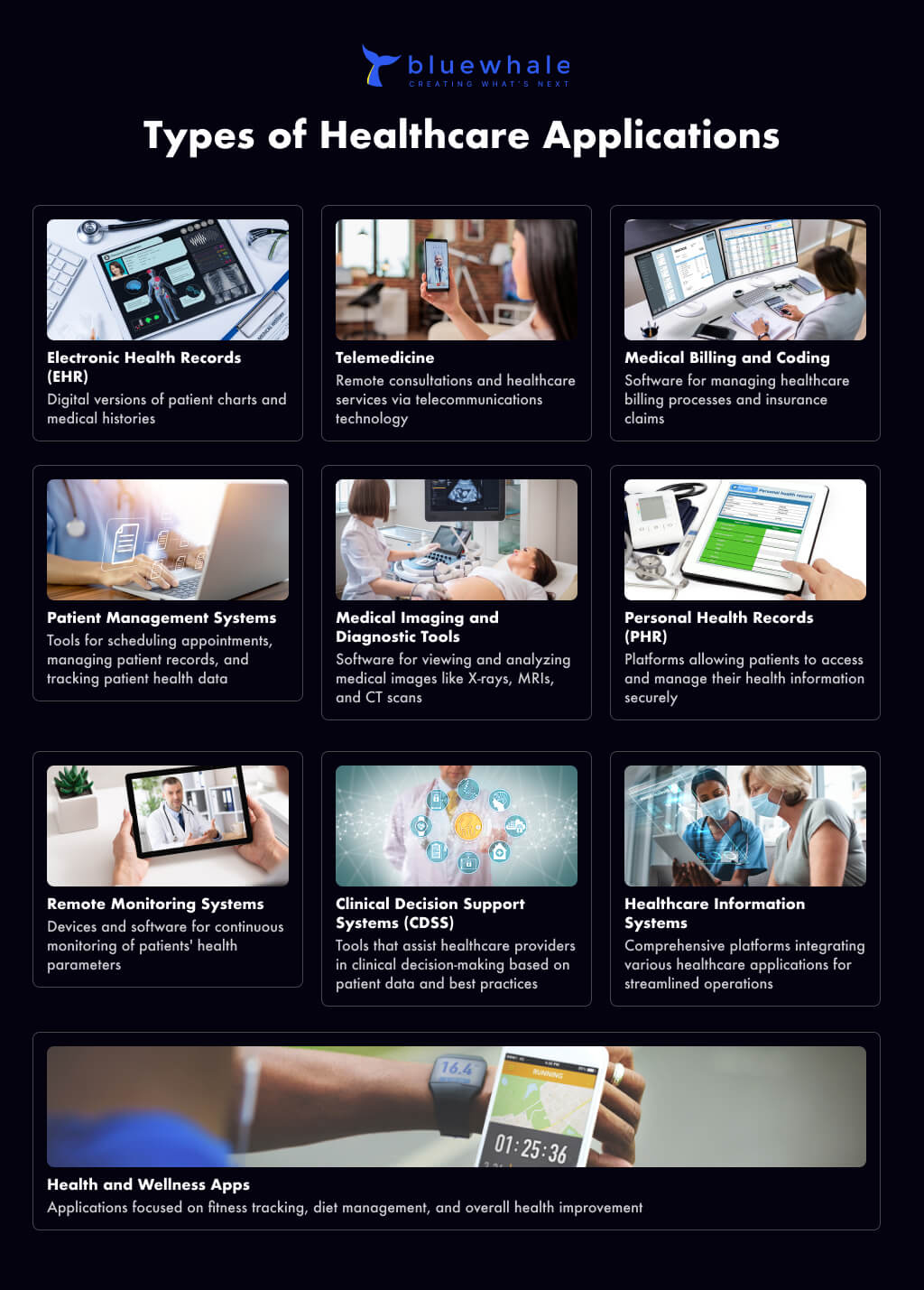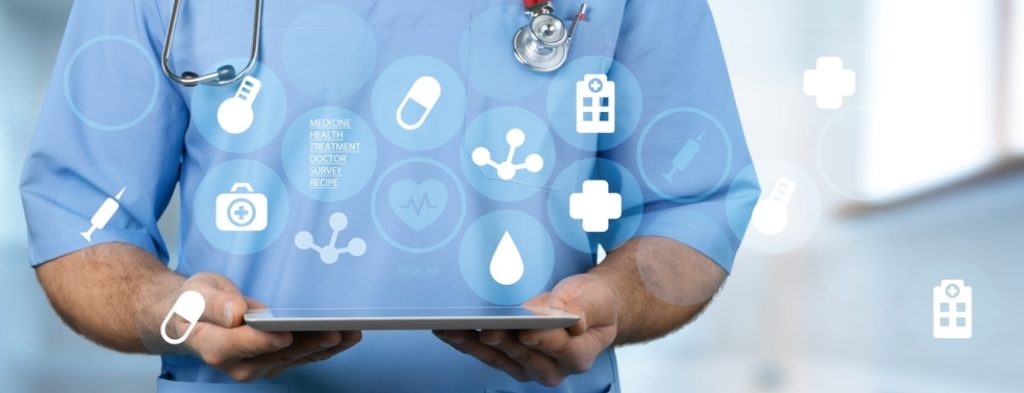1. Introduction
The landscape of healthcare is rapidly evolving, driven by technological advancements that aim to improve patient care, operational efficiency, and overall healthcare outcomes. One of the pivotal areas in this evolution is the development of healthcare apps. These applications are revolutionizing how medical professionals interact with patients, manage data, and streamline workflows. However, understanding the cost dynamics of healthcare app development is crucial for stakeholders in the industry. This comprehensive guide delves into the intricacies of healthcare app development costs in 2024, offering insights tailored for healthcare IT consultants and medical professionals.
Imagine a bustling hospital where a new healthcare app has revolutionized patient care, reducing bottlenecks and enhancing overall efficiency. Just as a perfectly tailored suit fits the wearer impeccably, a custom healthcare app can align seamlessly with an institution’s unique needs.
Consider the healthcare app development cost.
As of 2024, the investment in developing a healthcare app promises substantial returns, reflecting both immediate operational improvements and long-term financial gains.
Creating a healthcare app usually costs between $100,000 and $500,000. However, this amount can change a lot depending on the type of app. The cost depends on how complex the app is, what features it has, and how secure it needs to be. Different kinds of healthcare apps, like those for telemedicine or fitness tracking, have their own specific needs and challenges that affect the total cost.
2. Healthcare Market Overview

- United States: Digital health market projected to reach $600 billion by 2025, driven by telemedicine and AI integration.
Source: Healthcare IT News - China: Healthcare market expected to exceed $2 trillion by 2025, focusing on digital health and AI diagnostics.
Source: China Daily - European Union: Projected €2 trillion healthcare market by 2025, emphasizing personalized medicine and digital health records.
Source: European Commission - Brazil: Healthcare market to exceed R$1.5 trillion by 2025, with growth in telemedicine and health tech.
Source: Statista - Japan: Healthcare market projected to reach ¥40 trillion by 2025, focusing on robotics, AI, and telemedicine.
Source: Nikkei Asia - Emerging Markets: Rapid adoption of digital health tech to enhance access and outcomes by 2025.
Source: McKinsey & Company
3. Types of Healthcare Applications

| Healthcare Application Type | Description | |||
| Electronic Health Records (EHR) | Digital versions of patient charts and medical histories | |||
| Telemedicine | Remote consultations and healthcare services via telecommunications technology | |||
| Medical Billing and Coding | Software for managing healthcare billing processes and insurance claims | |||
| Patient Management Systems | Tools for scheduling appointments, managing patient records, and tracking patient health data | |||
| Medical Imaging and Diagnostic Tools | Software for viewing and analyzing medical images like X-rays, MRIs, and CT scans | |||
| Health and Wellness Apps | Applications focused on fitness tracking, diet management, and overall health improvement | |||
| Remote Monitoring Systems | Devices and software for continuous monitoring of patients’ health parameters | |||
| Clinical Decision Support Systems (CDSS) | Tools that assist healthcare providers in clinical decision-making based on patient data and best practices | |||
| Healthcare Information Systems | Comprehensive platforms integrating various healthcare applications for streamlined operations | |||
| Personal Health Records (PHR) | Platforms allowing patients to access and manage their health information securely | |||
4. Cost of App Development for Healthcare: Different Product Types
| App Type | Description | Features | Cost Range | ||
| Database App or EHRs | Monitors and improves healthcare services, providing actionable insights using predictive analytics. | – Demographic data insights – Administrative data – Health risks and health status – Past medical records |
$30,000 – $50,000 | ||
| Medical Networking App | Facilitates peer-to-peer communication among healthcare professionals to reduce physician burnout and enhance collaboration. | – Forum – News – Journals – Guidelines – Social networking – Case studies |
$30,000 – $60,000 | ||
| Billing App | Manages payments and medical bills, maintaining virtual receipts for smooth transactions. | – Custom bill generation – Automated billing – Discount adjustment – Audit support – Credit billings |
$40,000 – $90,000 | ||
| ePrescription (eRx) App | Enables healthcare institutions to share patient prescriptions directly with pharmacies and physicians. | – Integrated drug database – Extensive information viewability – Patient-specific reports – Customized interfaces |
$40,000 – $80,000+ | ||
| Telemedicine App | Facilitates remote consultations between patients and healthcare providers, enhancing accessibility and convenience. | – Video consultations – Secure messaging – Appointment scheduling – Patient records – Prescription management |
$50,000 – $120,000 | ||
| Fitness and Wellness App | Promotes healthy lifestyles by tracking physical activities, monitoring diet and nutrition, and providing personalized workout plans. | – Activity tracking – Diet and nutrition monitoring – Personalized workout plans – Integration with wearables – Goal setting and progress tracking |
$30,000 – $70,000 | ||
| Mental Health App | Provides tools and resources to support mental well-being, including mood tracking, meditation exercises, and access to professional help. | – Mood tracking – Meditation and mindfulness exercises – Access to therapists and counselors – Support communities – Educational content |
$40,000 – $100,000 | ||
| Chronic Disease Management App | Assists patients in managing long-term health conditions, providing tools for monitoring symptoms, medication adherence, and lifestyle adjustments. | – Symptom tracking – Medication reminders – Lifestyle recommendations – Patient education – Remote monitoring |
$50,000 – $100,000 | ||
5. Factors Influencing Healthcare App Development Cost
Various elements determine the overall expenditure, including the level of app complexity, target platforms, and integration with existing systems. Additionally, regulatory compliance and advanced security features add layers of cost, making precise budgeting essential.
5.1. Project Complexity
Project complexity can significantly influence healthcare app development costs—ultimately shaping the project’s timeline, resource allocation, and technological requirements.
Integrating advanced security features typically adds 20-40% to the total development cost.
A simple app with basic features will cost substantially less compared to a complex multi-functional app. Developers must accurately assess and prioritize features to avoid unforeseen expenses.
Understanding and managing project complexity is crucial. By defining clear objectives and realistic timelines, development teams can optimize procedures, streamline costs, and achieve better ROI.
5.2. Platform Choice
Selecting the right platform for a healthcare app profoundly impacts the overall development cost and potential reach. Developers often choose between iOS, Android, or both for maximum market penetration.
Opting for a single platform can reduce initial development costs.
However, developing for multiple platforms simultaneously ensures broader user engagement. Cross-platform development tools like Flutter and React Native offer a balanced solution by enabling functionality across iOS and Android, streamlining workflows, and optimizing resource allocation.
The platform choice essentially determines the accessibility of the app to the target audience. Given the varying preferences and technological ecosystems, selecting the appropriate development platform is critical to an app’s success, whether it’s an MVP to minimize initial costs, or a comprehensive solution for long-term value. Developing for both platforms can maximize market share, ultimately driving higher ROI.
5.3. Integration with Third-Party Services
Incorporating third-party services into a healthcare app can significantly enhance its functionality and user experience, delivering seamless integration with various essential systems.
These services may include payment gateways, Electronic Health Records (EHR), or telemedicine platforms.
Nevertheless, integration with external systems requires careful consideration, as it can affect both development time and overall costs.
Healthcare regulations and compliance standards, such as HIPAA, play a critical role in determining how these integrations are implemented.
Implementing third-party services often requires additional testing, security assessments, and customizations, all of which contribute to increasing the healthcare app development cost.
However, the investment in seamless integrations pays off by enhancing the app’s capabilities, ensuring a smooth user experience, and ultimately delivering greater value to both users and healthcare providers.
6. Technology Stack Impact on Cost

Selecting the appropriate technology stack is a crucial step in healthcare app development, impacting both initial costs and long-term sustainability. Decisions regarding programming languages, frameworks, and platforms can significantly influence the overall budget.
Advanced technology stacks like Node.js or React Native offer scalability and performance but come with higher costs due to specialized skill requirements. Additionally, incorporating robust security frameworks to ensure compliance with healthcare regulations, such as HIPAA, can add further complexity and expense. By prioritizing a well-chosen technology stack, developers position the app for optimal performance, security, and user satisfaction, ultimately enhancing its value proposition.
6.1. Backend Technologies
Backend technologies form the foundation of any healthcare application, enabling it to handle critical data processing, storage, and security functions essential for delivering a reliable user experience.
These technologies are responsible for the server, database, and application logic.
Typically, backend technologies include servers like AWS or Microsoft Azure, frameworks like Django or Ruby on Rails, and databases.
Selecting the right backend infrastructure is crucial to optimize the application’s speed, security, and scalability requirements, particularly in the healthcare industry.
This selection can have a substantial influence on the healthcare app development cost, determining not only the initial expenditure but also the ongoing maintenance expenses.
Ultimately, the choice of backend technologies impacts the application’s capability to adapt to future needs and emerging trends, safeguarding the investment while steering growth.
6.2. Frontend Frameworks
When considering frontend frameworks, several factors influence the overall healthcare app development cost.
Primarily, the choice of a frontend framework is a critical decision that shapes user experience, design flexibility, and performance. Frameworks such as React, Angular, and Vue.js are popular alternatives, each offering distinct advantages in terms of modularity, scalability, and developer productivity. These frameworks can significantly affect both the initial development costs and long-term maintenance expenses.
Importantly, they also impact the complexity of the user interface. For instance, healthcare applications demand intuitive, user-friendly interfaces, which in turn necessitate a potent framework capable of rendering complex data seamlessly and efficiently.
In conclusion, a well-selected frontend framework can enhance user satisfaction, lower development costs, and improve application performance. Developers should consider the trade-offs between ease of use, customizability, and support community to ensure they choose a framework that meets both their immediate needs and long-term objectives.
6.3. Middleware and APIs
Middleware and APIs serve as the backbone of healthcare app functionality and integration.
They provide the necessary bridge between different software components, allowing seamless data and process exchange. In healthcare, this translates to efficient communication between patient records, diagnostic tools, and care providers.
By leveraging middleware and APIs, developers can create scalable and interoperable applications. This interoperability is crucial for healthcare systems as it ensures consistent, accurate, and real-time access to patient data across different platforms.
Furthermore, integrating reliable APIs helps in automating routine tasks, freeing up valuable time for healthcare professionals to focus on patient care. This automation can significantly reduce costs associated with data management and manual inputs.
Investing in robust middleware and APIs offers long-term benefits.
7. Design Impact on Development Cost
In healthcare app development, a meticulous and user-friendly design holds immense value. A well-thought-out design not only enhances user experience but also significantly impacts development costs. Investing in an intuitive and responsive design leads to fewer user errors, higher engagement rates, and ultimately better health outcomes, making it a worthwhile strategic investment.
7.1. User Interface (UI) Design
User Interface (UI) design serves as the first point of interaction between the user and the application. In the context of healthcare app development, UI design has a profound impact on usability.
A strategically designed UI can simplify complex data, enhancing user satisfaction. Effective UI design reduces training needs, increases accessibility, and ensures compliance with healthcare regulations.
While a sophisticated UI design might augment the initial healthcare app development cost, it promises higher user engagement, better patient outcomes, and reduced operational costs in the long run.
The emphasis on intuitive design cannot be overstated, as it is an integral part of creating a successful healthcare application. When healthcare professionals and patients find the app easy to navigate, it minimizes frustration and errors, leading to greater efficiency and trust in the technology. The investment in a high-quality UI design reaps benefits far beyond the initial development phase, driving sustainable success and innovation.
7.2. User Experience (UX) Design
User Experience (UX) Design is pivotal in shaping how users interact with healthcare applications. It goes beyond mere aesthetics.
UX design focuses on creating meaningful and relevant experiences for users. This includes aspects of branding.
In healthcare app development, excellent UX design ensures the application is user-friendly and accessible to all.
A well-thought-out UX can significantly reduce the learning curve for new users, promoting faster adoption.
UX design plays a crucial role in ensuring that the app meets the unique needs of patients, healthcare providers, and administrative staff, enhancing overall satisfaction. The emotional response elicited by a well-designed UX can influence the app’s success.
Ultimately, the investment in high-quality UX design is justified by the improved outcomes, efficient workflows, and enhanced patient care that result from a seamless experience.
7.3. Custom vs. Template Designs
In the realm of healthcare app development, choosing between custom and template designs can significantly impact costs.
Custom designs offer a unique and tailored experience, tailored specifically to meet an organization’s needs. Although more expensive, they promise a unique user experience.
Conversely, template designs are more cost-effective and quicker to deploy. These off-the-shelf solutions may lack personalization but can suffice for general applications.
Opting for a custom design maximizes an app’s ability to cater to specific patient needs, enhancing its efficacy. A template design, however, may require compromises on functionality and user engagement.
Ultimately, the choice hinges on budget, timelines, and desired user experience, balancing investment against long-term benefits.
8. Development vs. Maintenance Costs
The initial development cost is a one-time expense, encompassing tasks such as coding, design, and quality assurance. However, maintenance costs, incurred after launch, are crucial to ensure the app operates smoothly and remains up-to-date.
Maintenance expenses often encompass bug fixes, updates for new operating systems, and feature enhancements. While these costs can be substantial, they are an essential investment in keeping the app relevant and functional. When budgeting for a healthcare app, factoring in both development and ongoing maintenance costs is pivotal for sustained success.
8.1. Initial Development Costs
Initial development costs represent a significant portion of the total investment in a healthcare app.
For developers, this entails meticulous planning, intricate coding, and comprehensive quality assurance measures, ensuring that the final product meets stringent industry standards. The complexity of the app, the number of features required, and the integrations necessary with existing healthcare systems will substantially influence these expenses.
Moreover, developers must account for essential functions such as user authentication, data encryption, and compliance with healthcare regulations. Ensuring these elements are robust from the outset can prevent costly revisions and potential security breaches in the future.
Significantly, the initial phase lays the foundation for all subsequent stages of development. Careful allocation of resources at this stage can result in a more efficient development process, leading to a higher return on investment. This foundational investment fosters user trust and satisfaction, ultimately contributing to the long-term success of the app.
8.2. Ongoing Maintenance Expenses
Ongoing maintenance expenses are a critical aspect of healthcare app development. These costs ensure the app remains functional, compliant, and secure.
- Bug fixes: Continual identification and rectification of software bugs.
- Updates: Regular updates to integrate new features and improve user experience.
- Compliance updates: Ensuring the app stays compliant with evolving healthcare regulations.
- Security patches: Applying necessary patches to protect against emerging threats.
- Performance enhancements: Optimization to maintain efficient performance as user demand grows.
Neglecting ongoing maintenance can lead to increased vulnerabilities and a subpar user experience. Regular investment in maintenance fortifies the app’s reliability.
Ultimately, allocating resources to maintenance preserves app integrity, nurtures user trust, and enhances the overall value of the healthcare application.
9. Hidden Costs in App Development
While many budget projections focus on development and deployment, hidden costs often emerge, catching developers and stakeholders off guard. These can include unexpected licensing fees, third-party integrations, and post-launch marketing expenses.
Having a thorough understanding of these potential costs can provide a more accurate financial forecast and ensure sufficient budget allocation.
9.1. Legal and Compliance Fees
Legal and compliance fees are critical for healthcare app development, ensuring adherence to stringent regulations and industry standards. These fees, however, can vary significantly based on the complexity of the application.
Healthcare applications must comply with HIPAA (Health Insurance Portability and Accountability Act). Non-compliance can result in substantial fines.
Additionally, securing patient data requires comprehensive legal frameworks. Expertise in healthcare law becomes vital.
International markets call for compliance with GDPR (General Data Protection Regulation) as well. This thorough scrutiny enhances global trust.
Understanding these legal obligations upfront aids in precise budgeting. This foresight not only evades hefty penalties but also builds a trustworthy application.
Ultimately, investing in legal and compliance checks is indispensable. Comprehensive compliance strategies pave the way for long-term success in the healthcare sector.
9.2. Marketing and Promotion Costs
Marketing and promotion costs play an essential role in ensuring that a healthcare app reaches its target audience.
Initial marketing typically encompasses exhaustive strategies such as digital advertising, social media campaigns, email marketing, and content creation, which are critical for capturing user interest. These endeavors not only enhance visibility but also foster brand credibility, an indispensable aspect of competing in the saturated healthcare market.
Consequently, these costs can range significantly based on the scale and specificity of the marketing plan. For instance, launching a national campaign would incur higher costs compared to more localized marketing efforts.
Undoubtedly, a well-invested marketing strategy is instrumental in accelerating user acquisition and retention. By prioritizing innovative and precisely targeted marketing strategies, developers can ensure that their healthcare app achieves market penetration and sustainable growth, thereby maximizing their return on investment.
9.3. Scalability and Performance Optimization
Ensuring scalability and optimizing performance are pivotal for the long-term success of healthcare apps.
- Load Balancing: Distribute network or application traffic across multiple servers to manage the load effectively.
- Caching Mechanisms: Implement caching strategies to reduce load times and improve user experience.
- Database Optimization: Regularly perform database maintenance and optimization to enhance app speed and efficiency.
- Cloud Services: Utilize cloud computing services to dynamically scale resources up or down based on demand.
- Microservices Architecture: Adopt a microservices architecture for easier scalability and independent deployment of services.
A scalable app can handle increased user demand without compromising performance.
Optimizing performance ensures that the app functions smoothly, providing a superior user experience.
10. ROI of Healthcare App Development
A healthcare app’s return on investment can be substantial, offering significant advantages, such as improved patient care and streamlined operations. Investments in these applications often result in enhanced patient engagement, reducing manual errors and operational costs, thereby contributing to overall efficiency.
By investing in a well-developed healthcare app, institutions not only improve their internal processes but also gain a competitive edge. Early adopters of technology in healthcare typically experience increased patient satisfaction and loyalty, translating to higher patient retention rates. These benefits collectively contribute to a compelling return on investment, justifying the initial outlay and ongoing expenditures.
10.1. User Acquisition Costs
User acquisition costs significantly influence the overall healthcare app development cost. Effective user acquisition is paramount, and the expenses involved can vary widely.
Acquisition costs include marketing efforts required to attract and engage users. These can entail digital marketing, traditional media campaigns, and promotional activities.
Every strategy mix chosen impacts the budget differently, and measuring returns on these investments requires careful analysis. Prioritizing channels that provide the best return on investment is essential for optimizing expenses.
Techniques like targeted advertising, partnerships, and leveraging social media trends can help reduce these costs. By continuously analyzing data and adjusting strategies, they can ensure effective user acquisition without unnecessarily inflating their budget. It’s crucial, then, to think of these costs as not just an expenditure but an investment in the app’s future success.
10.2. Revenue Models
Revenue models determine how the healthcare app will generate income post-launch. Choosing the right model is pivotal for the app’s viability and success.
Popular options include subscription-based services, which provide a steady stream of income.
Additionally, in-app purchases offer another avenue for revenue by allowing users to unlock premium features or access additional content, enhancing the user experience and providing a reason for continual engagement.
A well-crafted revenue model is tailored to the needs of the target market and the app’s unique value proposition. By thoroughly researching and possibly combining multiple models, one can ensure a sustainable and profitable future for their healthcare application. Embracing innovation and consistently re-evaluating the effectiveness of these models will keep the business growth-oriented and adaptable to changing industry demands.
11. Cost Estimation Tools for Apps
Estimating app development costs is essential.
There are numerous tools available that aid in this process. These tools provide a more comprehensive understanding of various financial aspects involved, thus allowing stakeholders to plan their budgets more accurately. Moreover, they can serve as a benchmark to validate quotes from developers.
Using these tools is highly recommended.
These instruments analyze factors such as – the complexity of features, the technology stack, design intricacies, and even potential maintenance costs. By leveraging such technology-backed solutions, one can be ahead of the game.
For those serious about developing a healthcare app, adopting cost estimation tools can illuminate the path towards financial clarity and strategic budget management, helping them anticipate and mitigate unforeseen expenses. Thereby, making informed decisions and ensuring project feasibility becomes significantly easier, fostering an environment conducive to successful healthcare app development.
12. Cost Per Feature in Healthcare App Development
Understanding the cost per feature is pivotal for managing the overall healthcare app development cost effectively.
Every feature added to the app contributes to the cumulative expense, often significantly influencing the total budget. Core functionalities such as user authentication, EHR (Electronic Health Record) access, and telemedicine capabilities generally bear higher costs due to their complexity and importance.
For instance, integrating secure user authentication can range from $2,000 to $5,000, whereas implementing telemedicine features might demand $10,000 to $15,000 depending on the required sophistication. Therefore, it’s crucial to have a clear roadmap of essential versus desirable features.
Delving deeper into user-centric features like appointment scheduling or medication reminders may cost between $1,000 and $3,000 each. These estimations highlight the necessity of strategically planning and prioritizing features to balance functionality with budget constraints.
| Feature Name | Description | Estimated Hours | Hourly Rate | Cost |
| User Registration | User sign-up and authentication | 20 | $50 | $1,000 |
| Appointment Scheduling | Booking and managing appointments | 40 | $50 | $2,000 |
| Telemedicine | Video consultations with doctors | 80 | $50 | $4,000 |
| EHR Integration | Electronic Health Records integration | 100 | $50 | $5,000 |
| Prescription Management | Managing and tracking prescriptions | 60 | $50 | $3,000 |
| Payment Gateway Integration | Secure payment processing | 30 | $50 | $1,500 |
| Notifications and Alerts | Reminders and notifications for users | 20 | $50 | $1,000 |
| Health Analytics | Data analytics and reporting | 70 | $50 | $3,500 |
| User Profile | Managing user profiles and preferences | 25 | $50 | $1,250 |
| Admin Dashboard | Administrative control panel | 50 | $50 | $2,500 |
| Security Features | Data encryption and user privacy | 40 | $50 | $2,000 |
| Testing and QA | Quality assurance and testing | 60 | $50 | $3,000 |
| Documentation | Creating user manuals and documentation | 20 | $50 | $1,000 |
| Maintenance and Support | Ongoing support and maintenance | 30 | $50 | $1,500 |
| TOTAL | $32,250 |
13. Hourly Rate for App Development
The hourly rate for healthcare app development can vary based on several factors including the complexity of the app, the expertise of the development team, the geographical location of the developers, and the scope of the project.
Here are some general guidelines for hourly rates in different regions:
- North America (USA, Canada):
- Hourly Rate: $100 – $250
- This region typically has the highest rates due to high living costs and demand for experienced developers.
- Western Europe (UK, Germany, France):
- Hourly Rate: $80 – $200
- Similar to North America, Western Europe has relatively high rates for skilled developers.
- Eastern Europe (Poland, Ukraine, Romania):
- Hourly Rate: $40 – $100
- Eastern Europe offers a good balance of cost and quality, with many skilled developers available at more affordable rates.
- Asia (India, China, Philippines):
- Hourly Rate: $20 – $80
- Asia typically offers the lowest rates, but quality can vary widely. It’s important to thoroughly vet developers in this region.
- Australia and New Zealand:
- Hourly Rate: $80 – $150
- Rates in Australia and New Zealand are on par with those in Western Europe.
- South America (Brazil, Argentina):
- Hourly Rate: $30 – $100
- South America offers competitive rates and a growing pool of talented developers.
When budgeting for healthcare app development, consider the following additional costs:
- Project Management: Often an additional 10-20% of the development cost.
- Design: UI/UX design can range from $50 to $150 per hour.
- Testing and QA: Typically costs $30 to $100 per hour.
- Maintenance and Support: Ongoing costs post-launch, often charged at the same hourly rate as development.
These rates are approximate and can vary significantly depending on the specifics of your project and the development team you choose.

14. Tips to Optimize Healthcare App Development Budget
Establishing a clear project scope from the outset helps avoid unnecessary costs and ensures focused development.
It is essential to leverage cost estimation tools to anticipate expenses accurately, allowing developers to prioritize features that maximize ROI and maintain the budget effectively.
Using a minimum viable product (MVP) approach streamlines initial development, offering valuable user feedback while controlling costs.
14.1. Prioritizing Features
Prioritizing features is essential to controlling the healthcare app development cost. By identifying which functionalities are most crucial to users, developers can efficiently allocate resources.
In 2024, with technology continually advancing, the healthcare industry can see significant shifts in feature importance based on patient feedback and medical trends. Prioritizing these features ensures higher user satisfaction and optimizes development costs.
To prioritize effectively, teams should categorize features into must-haves, should-haves, and nice-to-haves. This hierarchy helps in focusing on core functionalities that deliver the most significant impact without overextending the budget.
Developers should consult with stakeholders, including healthcare professionals and patients, to understand their needs. This collaboration will guide the prioritization process, ensuring the final product addresses critical pain points and enhances the overall user experience.
Ultimately, prioritizing features strategically helps mitigate risks, streamline development, and deliver a product that meets user expectations without unnecessary expenditure.
14.2. Agile Development Practices
Implementing Agile development practices can significantly impact the overall healthcare app development cost. How does one effectively utilize these practices?
Since 2001, Agile methodologies, a dynamic iterative approach to software development, have increasingly permeated various industries. Within healthcare app development, Agile promotes frequent reassessment, adaptive planning, and fosters an environment of continuous improvement.
Moreover, Agile’s key tenets, such as collaboration and flexibility, ensure that development aligns closely with evolving user needs and regulatory requirements. This alignment minimizes the risk of costly redesigns late in the development cycle.
With incremental development cycles, the project team can test and integrate new features continuously. This method not only keeps initial costs lower but also ensures a higher ROI through timely value delivery and user engagement.
Embracing Agile practices effectively can result in predictable budgets, manageable timelines, and a high-quality product.
15. Cost-Effective Healthcare App Development Strategies
Developing a healthcare app requires a meticulous blend of innovation and practicality to address modern healthcare challenges. By focusing on user-centric design and leveraging cost-effective development strategies such as MVP implementation and agile methodologies, developers can create robust solutions that enhance patient care, streamline operations, and adhere to stringent regulatory standards.
| Strategy | Description |
| MVP Development | Focus on Minimum Viable Product (MVP) development to launch core features quickly and gather user feedback for iterative improvements. |
| Agile Methodology | Adopt Agile methodologies for development, allowing flexibility, frequent testing, and incremental updates. |
| Open Source Technologies | Utilize open-source frameworks and libraries to reduce development costs and leverage community support. |
| Offshore Development | Outsource development to offshore teams in regions with lower labor costs while maintaining quality standards. |
| Cloud Services | Use cloud platforms for hosting and storage to reduce infrastructure costs and scale as needed. |
| Cross-Platform Development | Develop apps that work across multiple platforms (iOS, Android) using frameworks like React Native or Flutter to save development time and cost. |
| Reusable Components | Develop reusable components and modules to accelerate development and maintain consistency across the app. |
| Continuous Integration & Delivery | Implement CI/CD pipelines to automate testing, deployment, and updates, reducing manual effort and time-to-market. |
| User-Centered Design | Focus on user needs and preferences to minimize rework and ensure the app meets user expectations effectively. |
| Long-term Maintenance Planning | Plan for long-term maintenance and support from the outset to avoid unexpected costs and ensure app sustainability. |
15.1. Use of Open Source Tools
The use of open source tools can significantly reduce healthcare app development costs while maintaining high-quality standards.
- Free Access: Open source tools are typically free, drastically reducing initial expenditures.
- Community Support: These tools often come with a large community of developers, providing extensive support and resources.
- Flexibility: Open source software can be modified to fit the unique needs of a healthcare application.
- Security: Many open source tools are highly secure because they undergo rigorous peer review by the community.
- Scalability: Open source solutions can be scaled efficiently, accommodating future growth without incurring high costs.
Leveraging these tools enables developers to build robust, customizable healthcare applications cost-effectively.
This strategic adoption of open source resources drives innovation while staying within budget constraints.
15.2. Minimum Viable Product (MVP) Approach
Developing a Minimum Viable Product (MVP) can optimize healthcare app development costs by focusing on essential features initially.
- Cost Efficiency: Prioritizes core functionalities, reducing initial development expenses.
- Faster Time-to-Market: Gets the app into users’ hands quicker, allowing for early feedback.
- User-Centered Improvements: User feedback can guide future features, ensuring development aligns with actual needs.
- Risk Mitigation: Identifies potential issues early, reducing the risk of costly setbacks.
- Resource Allocation: Streamlines resources, focusing investment on the most valuable features.
Implementing an MVP approach encourages iterative development, effectively managing costs while gradually building a robust product.
This strategy enhances the likelihood of achieving a successful and cost-effective healthcare app.
16. Negotiating Development Costs
Negotiating development costs is a crucial aspect of healthcare app development, ensuring the project stays within budget constraints while maximizing value.
Effective negotiation starts with clear communication of project goals and requirements.
Outlining specific deliverables helps both parties understand expectations and fosters transparency.
Next, considering multiple vendor quotes provides a competitive edge in negotiations.
Focusing on long-term relationships with developers usually results in more flexible and favorable terms.
Above all, leveraging industry knowledge and cost estimation tools empowers stakeholders to secure the best deal.
17. Value of Investing in Healthcare Apps
Investing in healthcare apps presents substantial value, enhancing patient outcomes and streamlining operations across healthcare organizations.
For instance, by providing immediate access to health records and telehealth services, healthcare apps can significantly reduce delays in critical patient care. This real-time interaction between patients and healthcare providers not only improves satisfaction but also increases the efficiency of healthcare delivery, directly impacting overall health outcomes positively.
Furthermore, apps foster a data-driven approach in healthcare management. By analyzing usage patterns and patient feedback, facilities can continually refine their services and ensure they are meeting patients’ needs accurately and effectively.
Ultimately, investing in healthcare apps ensures organizations stay at the forefront of technological innovations, offering cutting-edge services that attract and retain patients. This proactive approach not only promotes a higher standard of care but also translates into substantial long-term financial gains by optimizing operational workflows and reducing unnecessary costs, showcasing a clear return on investment.
18. Benefits of Custom Healthcare Apps
Custom healthcare apps offer a tailored solution, enhancing the functionality and usability for specific patient needs.
Firstly, they provide personalized patient experiences by catering to individual health conditions, resulting in better engagement and adherence to treatment plans. This personalization empowers patients, encouraging proactive management of their health and significantly improving overall health outcomes.
Moreover, custom apps offer seamless integration with existing healthcare systems, ensuring smooth data flow and interoperability between various platforms. This compatibility enhances operational efficiency, reducing the likelihood of errors and ensuring that healthcare professionals can access and utilize accurate information.
Finally, the flexibility of custom healthcare apps allows for continuous improvements and updates, enabling the incorporation of the latest medical research and technological advancements. This adaptability ensures that the app remains relevant and effective, providing healthcare organizations with a cutting-edge tool to improve patient care and streamline operations continuously.
| Benefit | Description |
| Improved Patient Engagement | Custom apps provide personalized experiences, reminders, and health tracking, enhancing patient engagement and satisfaction. |
| Better Data Management | Streamline data collection, storage, and access, ensuring that patient information is organized and easily retrievable. |
| Enhanced Communication | Facilitate better communication between patients and healthcare providers through secure messaging and video calls. |
| Increased Efficiency | Automate administrative tasks such as scheduling, billing, and record-keeping, freeing up time for healthcare professionals. |
| Remote Monitoring | Allow healthcare providers to monitor patients’ health remotely, reducing the need for frequent in-person visits. |
| Personalized Care | Provide tailored healthcare solutions based on individual patient needs and health data. |
| Cost Savings | Reduce operational costs through improved efficiency and automation of routine tasks. |
| Better Health Outcomes | Enable proactive health management and early intervention, leading to improved health outcomes for patients. |
| Data-Driven Insights | Utilize data analytics to gain insights into patient care, treatment effectiveness, and operational efficiency. |
| Compliance and Security | Ensure compliance with healthcare regulations and provide robust security features to protect patient data. |

Bottom Line Healthcare apps are becoming more popular as people want better and easier-to-use health tools. To make a good health app that really helps its users, you need to think carefully and do a lot of research from the very beginning. It’s important to work with a company that knows how to make healthcare apps if you want something high-quality. Blue Whale Apps is a really good company for making mobile apps, and they help businesses create great products. If you want to know how much it might cost to make your healthcare app, you can talk to the experts at Blue Whale Apps and they’ll give you an estimate.






